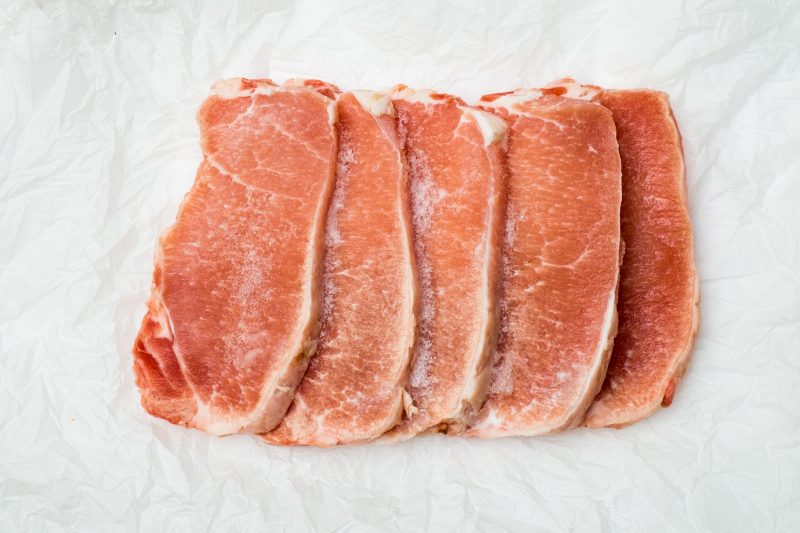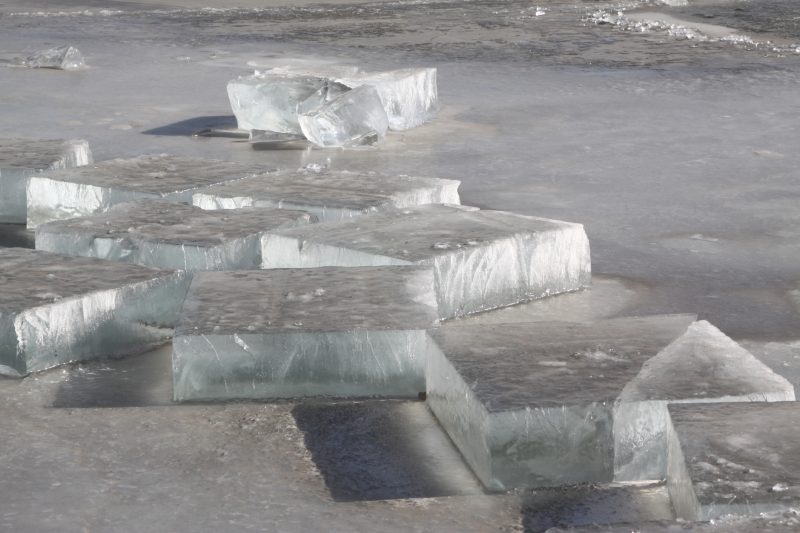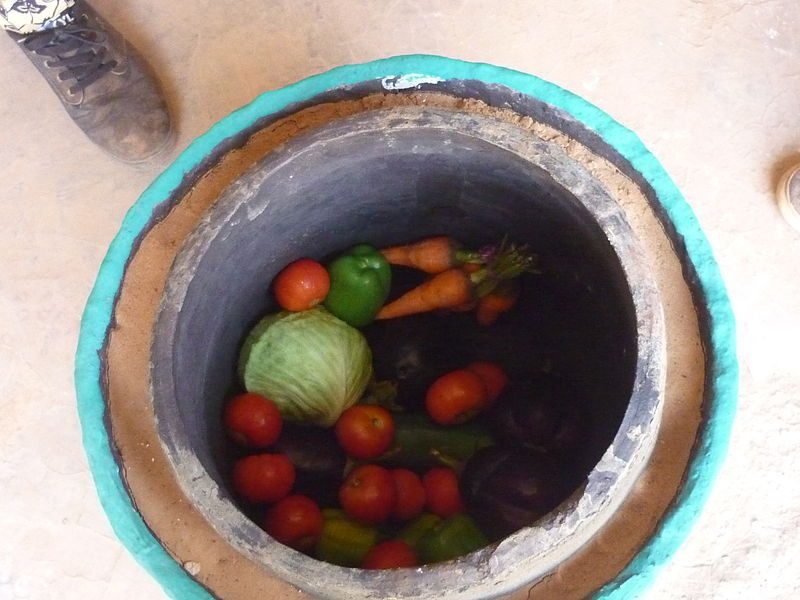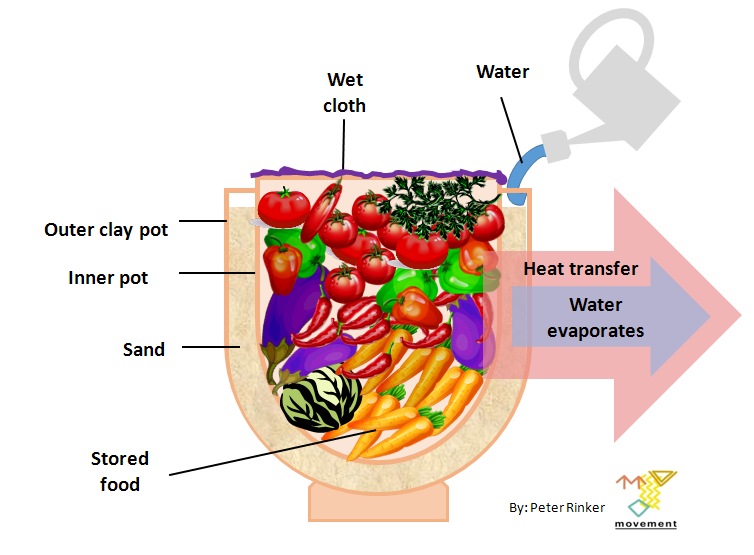Keeping Food Cool With Evaporative Cooling
Amongst the many everyday uses of electricity, one of the most important in the home is for preserving food. Actually, refrigeration is usually the only method of food preservation that most of us use in the home. We buy canned and dried foods that are preserved, but the art of food preservation has largely gone by the wayside.
What this means is that any time we lose electrical power, or if we were to lose the electrical grid for some reason, most people would have no way of keeping food fresh. Any food in the refrigerator or freezer would have to be eaten within a few days, and any food that has been hunted or picked will have to be eaten before it decays.

Refrigeration works as a means of preservation not by killing bacteria but by slowing its metabolism. The activity of bacteria slows down in cold weather, and it multiplies less so causes less decay to food. Freezing will kill most bacteria and any it doesn’t kill enter a state in which they are totally dormant. But without electricity, how can we refrigerate or freeze food?
The earliest form of refrigeration was to keep food underground. People would keep milk and other perishables in ceramic jugs, either in a cave on their property or hanging in their well. As it is always cooler underground than it is on the surface, this did indeed provide some refrigeration.
The Icebox

But that wasn’t enough, especially considering that not everyone had caves or wells. So in most cases, people invented other means of preserving food. The whole idea of refrigeration and freezing came directly from nature. Meats frozen in the natural cold of wintertime would keep for longer as long as they remained frozen. This allowed our ancestors to eat through the winter.
As time went on, people became more organized about this. They cut ice from rivers and lakes in the winter and stored it in warehouses, referred to as “ice houses,” for use in the warmer months. If you’ve seen the Disney movie Frozen, the opening scene shows men doing just this.
People would have ice boxes in their homes, and the same people who collected the ice in the wintertime would go from house to house selling ice. The ice boxes were large cabinets with multiple compartments to store food in, and they provided refrigeration for whatever fresh foods they had. Early refrigerators were really nothing more than ice boxes with refrigeration units mounted on them.
The Invention of Evaporative Refrigeration

The ability to use evaporation to cool food was discovered as another way to keep food for longer. Our bodies use the evaporation of sweat as a natural means of cooling, so it only makes sense that evaporation can be used for cooling other things – hence, the invention of the Zeer Pot.
The Zeer Pot is probably the simplest evaporative refrigerator there is. It consists of two unglazed ceramic pots and sand. Unglazed pots are needed so that water can soak through the clay. Surprisingly, a Zeer Pot will keep the food inside it at about 55°F, even with an ambient temperature of 100°F.
To make a Zeer Pot, you need two fired but unglazed ceramic pots. These will nest one inside the other with some space in-between them. Any size pots can be used, but you’ll actually lose a lot of space to the pot itself so you want something that will give you a good volume of space inside the inner pot – say, about the equivalent of a gallon milk jug.
You want the rim of the inner pot to end up sitting level with or slightly higher (about 1/2 inch) than the rim of the outer pot. To accomplish this, you will probably need to put some sand in the bottom of the larger pot. Stand the inner pot on that sand in the middle of the other pot. Fill the space between the two pots with more sand, all the way up to the rim of the outer pot.
Using the Zeer Pot

That’s it – you now have a Zeer Pot. To use it, pour water into the sand between the two pots, soaking it thoroughly. This water will then soak through the pots. As it reaches the surface of the outer pot, it will start evaporating – absorbing heat from the pots to do so. This is what brings about the cooling, as “cool” or “cold” doesn’t actually exist; they are merely words we use to describe a lack of heat.
Items stored inside the inner pot, such as produce, will be kept cool. This will slow their decay just like a modern electric refrigerator. Typically, produce stored in a Zeer Pot will last about four times as long as comparable produce that is stored in the open air.
Please note that you will need to replenish the water in the sand as it dries. It is also useful to put a thick wet cloth over the opening of the Zeer Pot in order to help keep the top of the pot cool as well.
Taking the Idea a Step Further
There’s a company in India that has taken this idea a step further. They are making a small ceramic refrigerator complete with a door. Rather than filling the area between the inner and outer walls with sand, they just have the customer fill it with water. A tap is provided so the chilled water can be used as drinking water as well.
While these are not available here in the United States, it would not be hard to copy their design and make your own if you have any skill working with ceramics and access to a kiln.
Another Idea for Evaporative Cooling
Evaporative cooling will work regardless of the shape or size of the cooler. You don’t need to stick to a Zeer Pot or even make a ceramic refrigerator. You can use anything which will allow to you create an enclosed space surrounded by some material that water can evaporate from.
One simple way of doing this for emergency food storage is to take a utility shelving unit and cover it with a heavy wet cloth. Just as with the Zeer Pot, the water will evaporate from the cloth, drawing heat from the shelving and food inside. Placing the shelving unit where there is a slight breeze would increase the cooling; just be sure to keep replenishing the water as it evaporates off.





